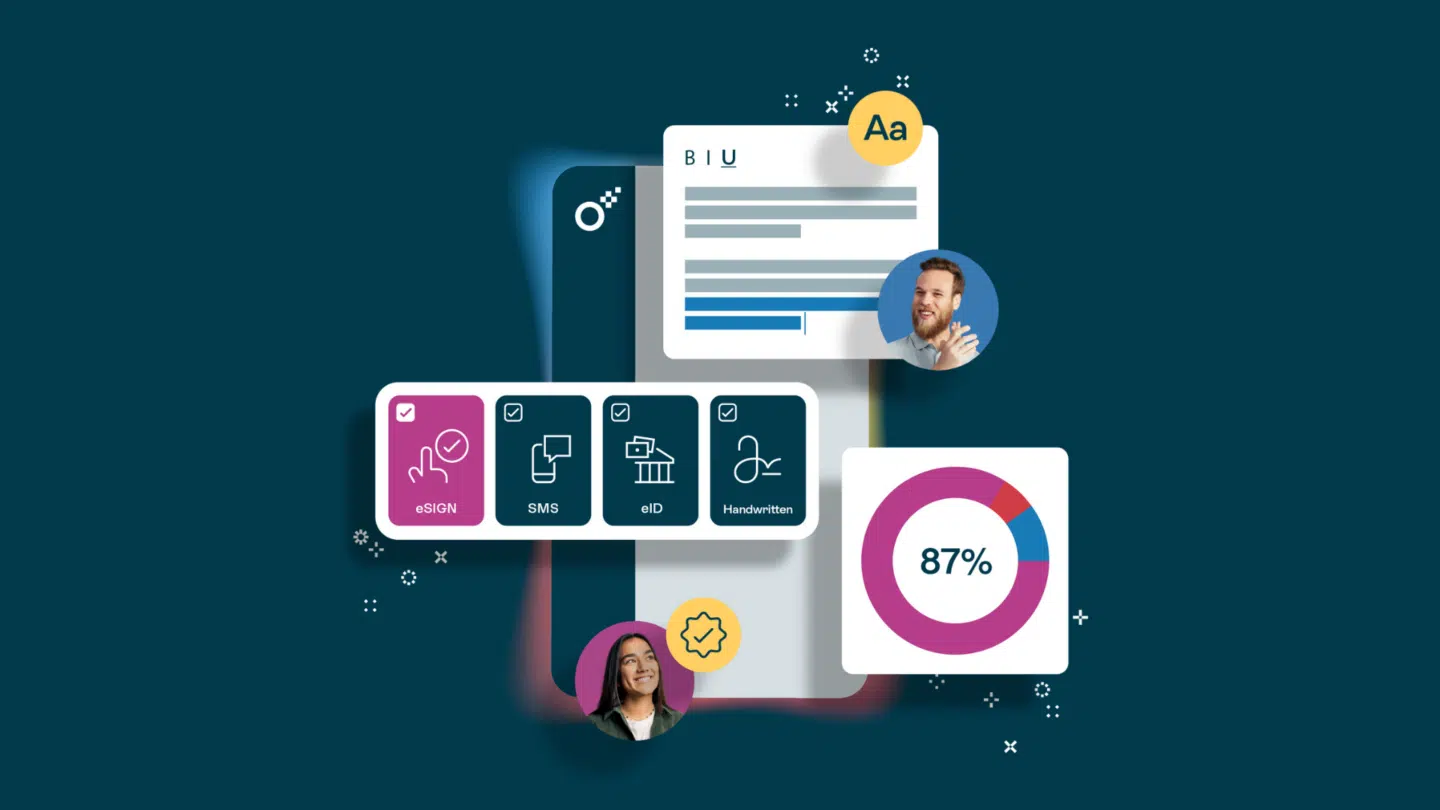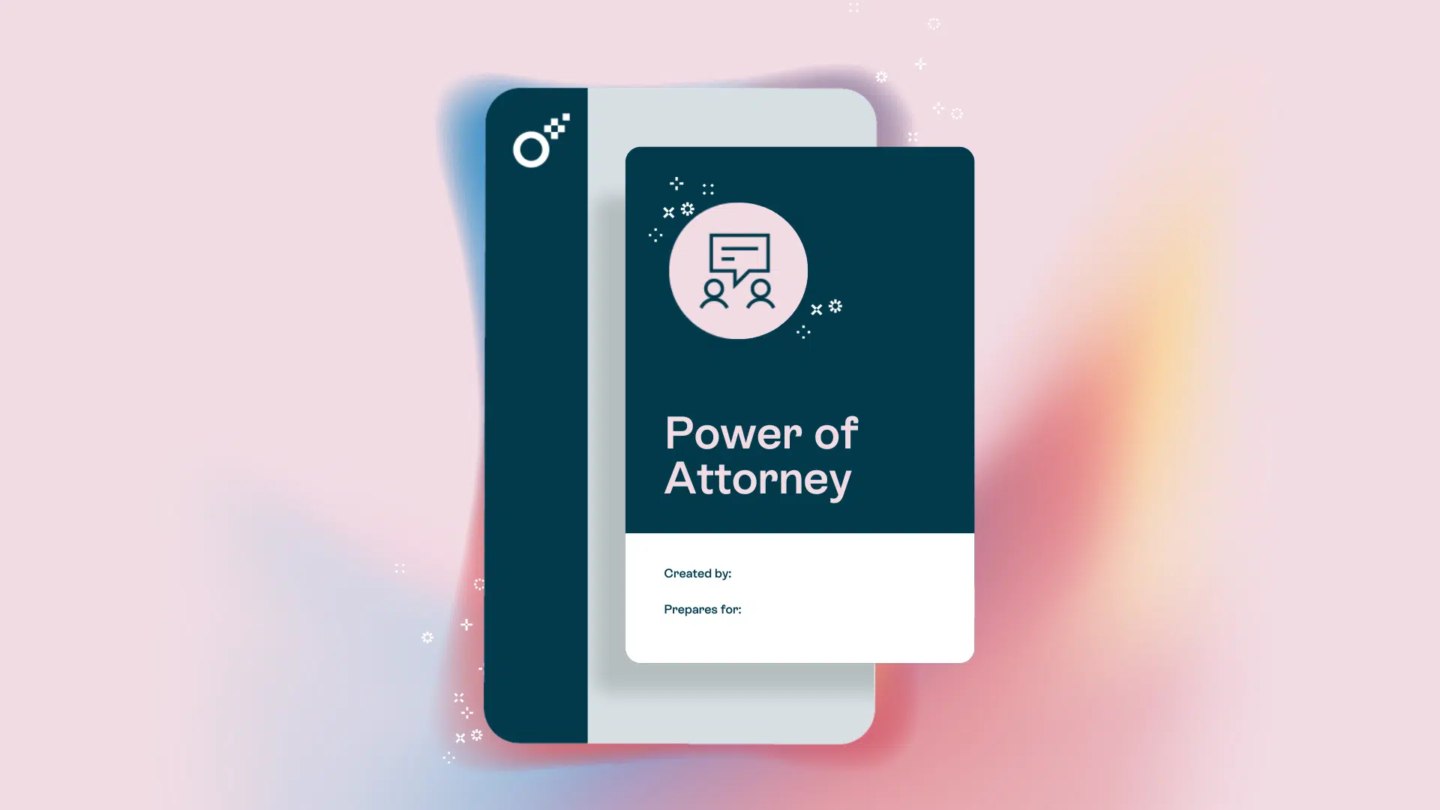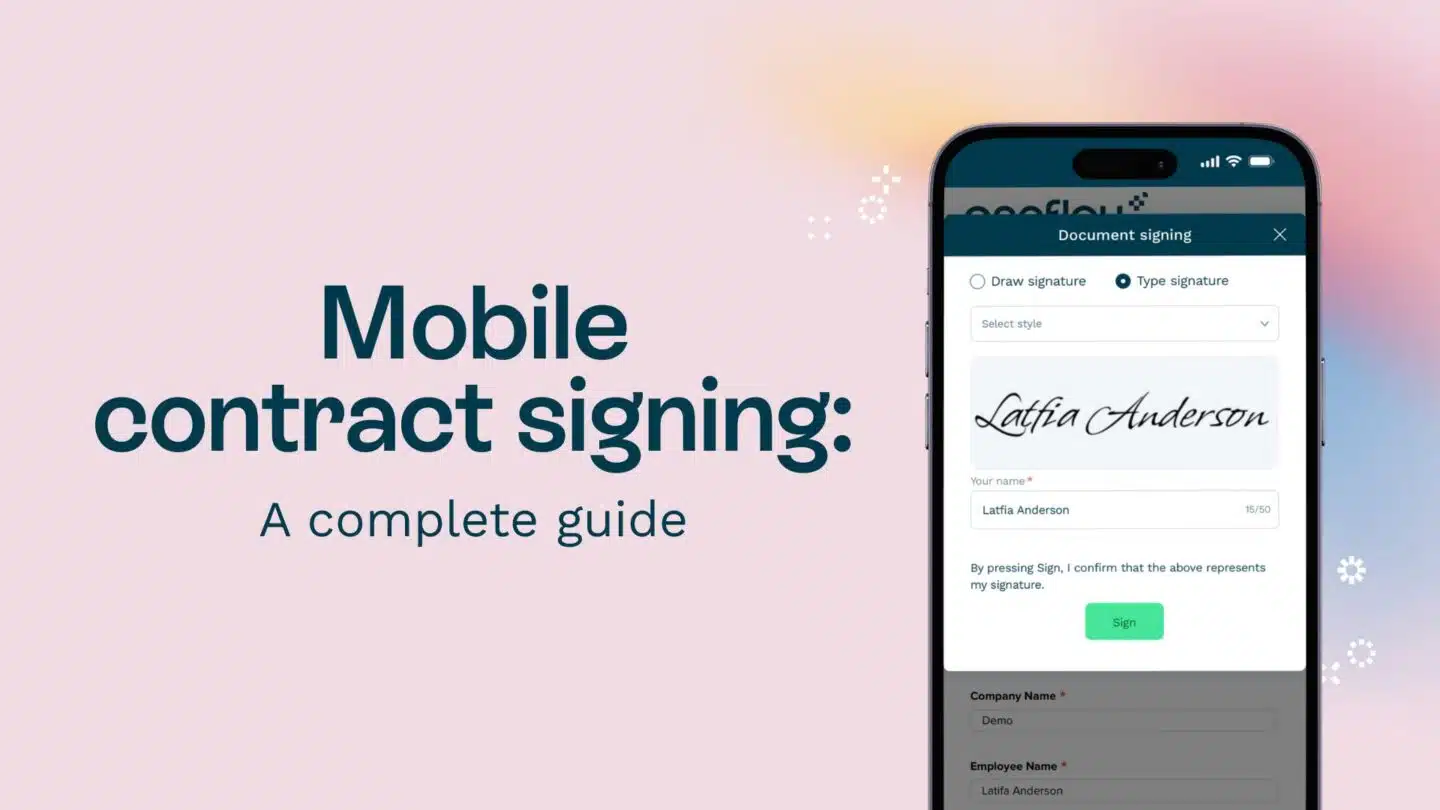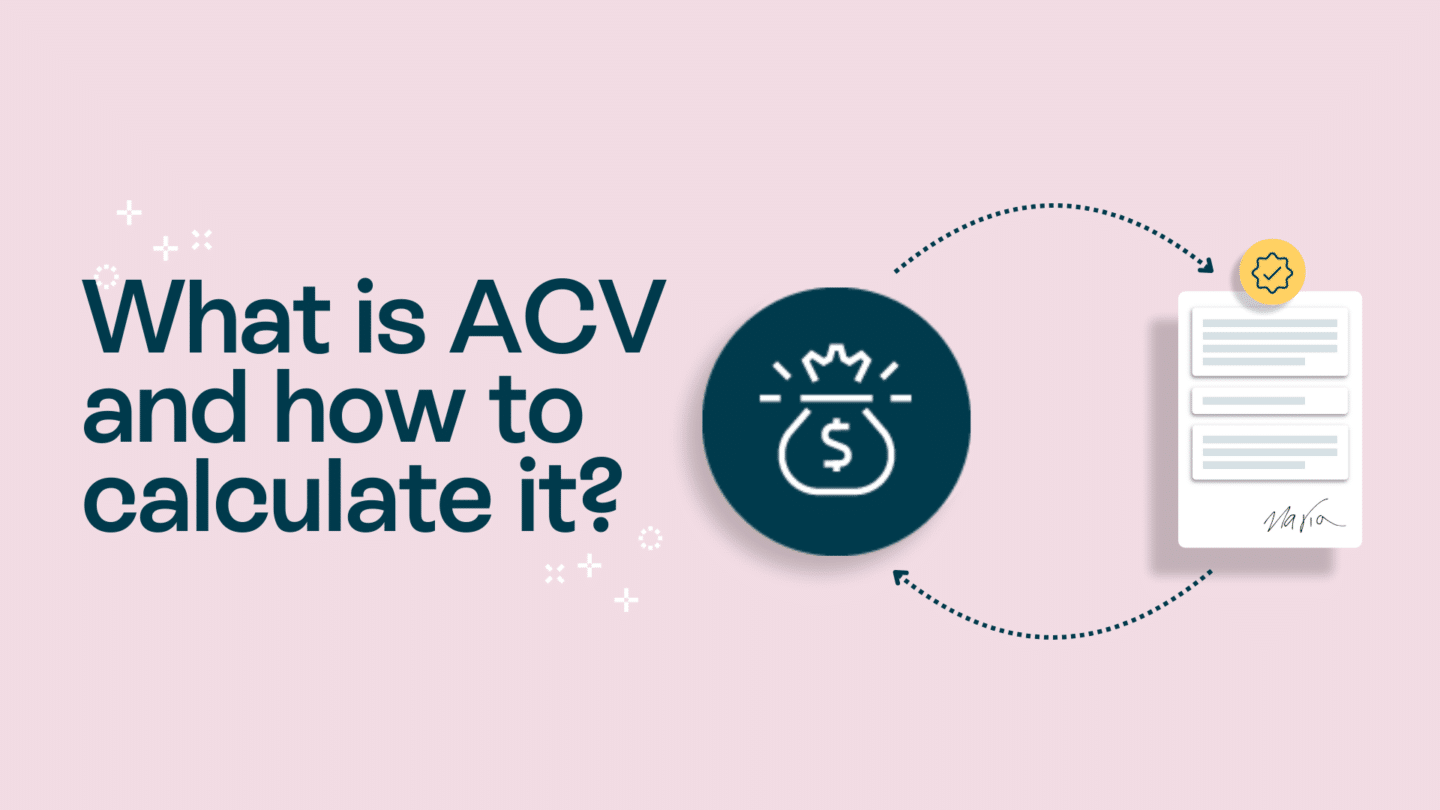Do you want to shorten your contract process but always find yourself bogged down in paper? Then electronic contracts might just be for you. They’re faster, easier to handle, and more secure. It’s a great starting point for any digital transformation.
Statista estimates that the amount spent on digital transformation will increase by 60% in the United States alone by 2025. As more businesses digitalise, competition will only intensify. If you want to stand out in the dynamic marketplace of the current day, ditch traditional contracts for electronic ones.
To organise your workflow to be powered by e-contracts, read through this guide.
What is an electronic contract?
84% of companies are under pressure to simplify their contract process and 81% of them plan to invest in contract automation; according to World Commerce & Contracting (WCC).
An electronic contract is basically a digital version of a paper contract. It includes all of your terms & conditions like a paper contract, and is still legally binding. E-contracts let you negotiate, edit, and e-sign, all in a simpler way than on paper.
An electronic contract is the exact same a s a paper one, just on your screen. With the right software, you can even categorise templates for the same kind of deals in business like marketing, manufacturing, procurement, etc., and use them for clients in that field.
Read also: All you need to know about Oneflow electronic signatures and the eIDAS regulation

What is a traditional contract?
A traditional contract is also known as an ordinary paper contract. It requires you to meet with your counterparty in person to get it signed or have it delivered by mail. And for every change that needs to be made, a new draft is created and printed.
The difference between traditional and electronic contracts
You might think that traditional paper contracts are easier to use because you won’t have to spend time training your team or buying a new tool. But once you invest in electronic contracts, you’ll be surprised by how much money and time you’ll save through them as they digitally transform your contract process.
For instance, a paper contract takes at least 4-6 weeks to process, verify, and deliver to the client. But with e-contracts, you can create contracts in 5 minutes with made-for-you templates and e-mail them in seconds.
To give you a better view, here are the prime differences between normal and electronic contracts:
- Scope for error
It’s easier to catch and edit the errors in an electronic contract as it’s web-based and you can edit in real time.
- Transaction costs
You can skip the costs of printing, paper, ink, storage, and the like, if you use electronic contracts. All you have to do is create them online on digital software and get them e-signed. If your business uses normal contracts, you will have to renew these for each client, use more paper, and keep an inventory of related materials. This all adds to the cost.
Remember: electronic contracts are better for the planet than normal contracts.
- Security
Electronic contracts are more secure than paper ones. This is thanks to security features, such as biometric sign-ins, passwords, and team collaboration platforms that are inaccessible to anyone who does not have permission. On the other hand, even when you keep normal contracts under lock-and-key, unauthorised personnel can still break into safes or archives and access them.
Electronic contracts are also more customer-friendly, and APIs let you integrate them with your platforms.
Read also: 10 ways Contract Lifecycle Management improves customer trust and brand reputation

How do you create an electronic contract?
You can create electronic contracts in a variety of ways. But some features like live updates, ready-to-go templates, cloud storage, and HTML and web-based contracts are the way to go.
Great contract management software lets you create these contracts, and sign them live – all without leaving your CRM. It all happens through that magic of native integrations. You can use the intuitive contract editor to personalise different contracts for clients as well.
Here are the steps for creating an electronic contract in Oneflow:
- Pick a template.
- Add more text, images, and product tables if necessary.
- Fill in the contract details and the fixed terms.
- Add your counterparties and click send.
- Track the contract status in Oneflow and finally get it e-signed.

The advantages of e-contracts
The advantages of e-contracts compared to traditional paper contracts can be felt almost immediately. You’ll experience increased efficiency, significant cost savings, and more control.
- Efficiency and convenience: E-contracts streamline the contract creation and management process. Parties can create, review, edit, and sign contracts from virtually anywhere with an internet connection. This eliminates the need for physical meetings, postage, and manual paperwork. As a result, contracts can be drafted and executed much more quickly, saving time and effort for all parties involved.
- Accessibility and searchability: Electronic contracts are typically stored digitally, making them easily accessible and searchable. Parties can retrieve contracts quickly by searching for keywords or specific terms within the contract text. This enhances transparency and reduces the risk of misplacing or losing important documents, which can be common with paper contracts.
- Security and Authentication: E-contracts often incorporate advanced security measures and authentication methods to ensure the integrity and authenticity of the agreement. Digital signatures, encryption, and audit trails help verify the identity of the signatories and protect against tampering or unauthorised changes to the contract. This level of security can provide a higher degree of confidence in the contract’s validity compared to traditional signatures on paper contracts.
What are the different types of e-contracts?
There are 5 different types of e-contracts. These are:
- Browsewraps: Browsewraps often come up when landing on sites. They’ll say something like, ‘By using this site, you agree to receive cookies’, or something along those lines.
- Clickwraps: Ever booked a flight with Ryanair? Noticed how the ‘I agree to the terms and conditions’ box automatically fills in when you search for cheap flights? That’s a clickwrap in action. You’re clicking ‘I accept when using a site’.
- Scrollwraps: If you have an iPhone, you need to scroll through the terms and conditions before a major update can be installed. This is a scrollwrap in action. It’s only when you get to the end that you can agree to the terms and conditions.
- Sign-in wraps: Sign-in wraps are like browsewraps in that they assume agreement. Unlike browsewraps, however, that assumption doesn’t come into effect until a user has signed in.
- E-signatures: These are often reserved for more formal contracts. The contract is not considered to be valid or binding until both parties have signed using an e-signature.
How to e-sign an electronic contract
There are different ways in which you can sign your e-contracts. These are:
- You can sign a hard paper copy of your contract, scan it, and upload it, and it’s still acceptable in many countries.
- Electronic signatures: You can add them to your contract with software, third-party add-ons, drawing, or even using cursive fonts.
- Digital signatures: These need to be verified by a Certificate Authority (CA) using Private Key Infrastructure (PKI).
- Clickwrap: this agreement just needs you to click “I agree” or “Accept” and your document will be e-signed.

How to sign an electronic contract: step-by-step
Here’s how to sign an e-contract using contract management software like Oneflow:
- Open the notification email: When a contract has been created and is ready to be signed, the person who’s created it will send the contract to be signed. This triggers an email, which lands in your inbox almost instantly.
- Fill in the required fields: The first thing to do is read the contract. It might sound like a given, but it never hurts to have that final check. If you spot a mistake, don’t worry. A big part of how to sign an electronic contract comes from whether it’s a PDF or HTML contract. If it’s a PDF, you might miss a field. If it’s HTML, it will notify you if any fields have been missed.
- Leave comments, if necessary: With an HTML contract, should you spot an error, you can simply leave a comment. The sender will be notified right away, and can make any edits necessary before you sign, all without creating an endless email chain.
- Sign away: Whether that’s clicking a button reading ‘Sign now’, signing with an ID app, like BankID, or using a handwritten signature, great contract management software has you covered.
- Get a confirmation email: As soon as you’ve signed the contract, both you and the person who sent it out will get an email. You’ll also both be able to download the contract to keep. But we recommend using an online archive solution.
How are electronic contracts used in different sectors?
E-contracts are so powerful, and have such a universal application, that they can be used in just about every sector imaginable. From Legal, to HR, to Sales, electronic contracts can help you take your business to the next level. In fact, you can find out even more about that here.
E-contracts for sales
In the Sales department, e-contracts revolutionise the sales process. Sales teams can quickly create and distribute electronic contracts to customers, partners, and distributors. Electronic signatures streamline the closing of deals, reducing turnaround time and improving sales efficiency.
Additionally, e-contracts often integrate with customer relationship management (CRM) systems, allowing sales teams to track and manage contract-related activities more effectively.
Examples of contracts for Sales:
- Proposals
- Contracts
- Statements of work
E-contracts for HR
Human Resources benefits from e-contracts by simplifying the hiring and onboarding process. HR departments can digitally send employment contracts to new hires, who can sign them electronically. This speeds up the recruitment process, reduces paperwork, and ensures a more secure and organised record of employment agreements.
E-contracts also facilitate remote work arrangements and enable HR to manage employment-related documents electronically.
Examples of contracts for HR:
- Employment agreements
- Leave applications
- Compensation documents
E-contracts for finance
In Finance, e-contracts help streamline financial transactions and agreements. Financial departments can use e-contracts for agreements such as loans, vendor contracts, and procurement agreements. Electronic signatures and automated workflows accelerate approval processes, reducing delays in payments and financial transactions. This enhances financial accuracy and compliance while saving time and resources.
Examples of contracts for Finance:
- Invoices
- Income statements
- Cash flow statements
E-contracts for legal
The Legal department benefits from e-contracts in terms of document management and contract review. Legal teams can efficiently draft, review, and edit contracts digitally, collaborating with stakeholders in real time. Advanced features such as version tracking and audit trails enhance transparency and compliance.
E-contracts also enable the use of secure digital signatures, increasing the authenticity and enforceability of legal agreements.
Examples of contracts for Legal:
- NDAs
- Practically all contracts within the company
Oneflow allows you to transform the outdated traditional process of contracts and work with digital contracts that are truly dynamic.
At every stage of the contract process, from creation to adding electronic signatures — you can use this platform to manage and store contracts for all your clients.
Are e-contracts legally binding?
In short, yes. But it’s not a question with a set answer.
The GDPR and the eIDAS regulations can vary from country to country. There’s also the fact that GDPR and eIDAS both apply to businesses outside of signatory countries, but who do business in signatory countries. In countries that aren’t bound by GDPR and eIDAS, but use these laws as bases for their own legislation, the picture isn’t quite so black and white.
Like the EU, some countries apply their laws to their citizens’ data, even when it’s being handled overseas. Some don’t. Make sure to check local laws before making any big decisions about how to handle your electronic signatures. After all, you want them to be legally binding.

FAQs
Which sectors use electronic contracts?
Whatever the sector, you can use electronic contracts. If you use contracts in any way, shape or form, electronic contracts can help you work even more efficiently.
How to sign an electronic contract with Oneflow
Whether you want to click a sign button, use BankID, email or SMS verification, or make your signature look handwritten, Oneflow lets you do it!
Is there a difference between traditional contracts and electronic contracts?
Yes! Traditional contracts often rely on paper or PDFs. This doesn’t let you be anywhere near as dynamic as entirely online electronic contracts let you be.





